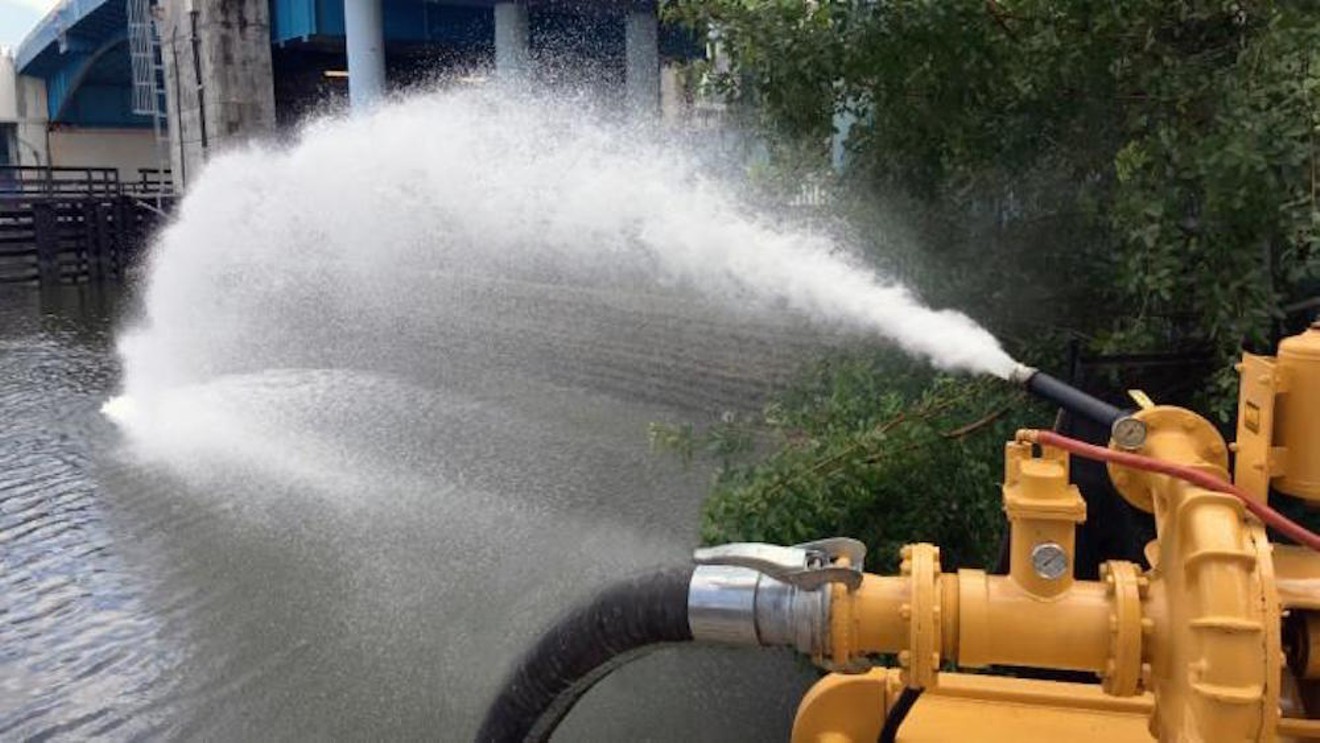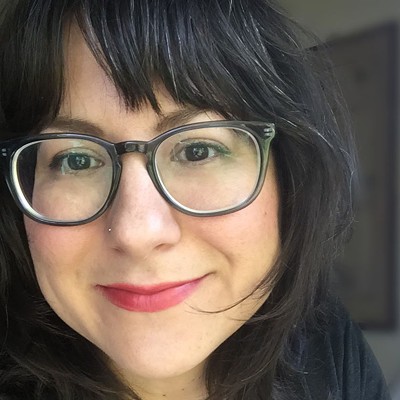Miami, in all of its weirdness and smallness, is a great incubator for creativity. But opportunities for growth can be limited. Sometimes the only way to reach one's full potential is to leave and learn more elsewhere. But though local creatives might leave in body, their spirits and connections remain tethered to the Magic City. One such artist is Puerto Rican-born, South Florida-raised Misael Soto.
A staple on the Miami art scene for many years, Soto is wrapping up his MFA from the School of the Art Institute of Chicago. "I'm fully engrossed in my practice in a way I couldn't even have fathomed just a few years ago," he admits. "While I miss Miami loads — and I'm sure I'll be back for more than a week soon — the attention to my work and art-making in general in Chicago is invaluable and in ways that just weren't happening for me in Miami." He says his artwork has benefited from new opportunities in the Windy City and the intensifying emotions he's had as a reaction to them, which he describes as "enlightening, obsessive, invigorating, and infuriating."
He was asked to be a part of the Miami-Dade County Department of Cultural Affairs' Art in Public Places collaboration with the University of Miami School of Communication for the series Sea Level Rise. It presents site-specific, temporary public art interventions that explore exactly what the title suggests. The planning began three years ago and also includes artists Domingo Castillo, Agustina Woodgate, Tom Scicluna, and Hannes Bend. "I'm honored to be in such good company," Soto says.
Soto's installation, Flood Relief, sets up multiple industrial gas-powered water pumps as a kind of fountain, pumping water in and out of Biscayne Bay. It demonstrates the futility of efforts to disperse floodwaters and stave off the effects of climate change.
"About four years ago," Soto recalls, "I was driving down Indian Creek around 40th Street [in Miami Beach] and had to merge off of the road in order to drive by water that had overflowed from the waterway and onto the street. I'll never forget the two gas-powered water pumps needlessly pumping water from the road and out onto the bay, the water all at the same level," he recalls with dismay. "The pumps were all show, doing absolutely nothing to help the situation. Yet I felt like I was the only one who noticed. The tragic poetry of this unintentional installation, birthed of a perfect romance between climate change and bureaucracy, was the inspiration for this work."
Soto says the installation is related to the other work he's been making, which is focused on "liminality, mutability, finding moments of pause and poetry within given structures" — structures like his life in Chicago in the art world and school. Recently, he worked with artist Ayesha Singh from New Delhi on Provisional Obstruction, a monthlong installation in front of the Chicago-based arts organization ACRE (Artists' Cooperative Residency and Exhibitions). They used scaffolding and banner images to obscure points of view of the organization's façade to divert foot traffic.
"The installation was a response to thoughts about what it means to make artwork for an arts institution located in a neighborhood that is changing/being gentrified and what signifiers we can use as artists to confront and push a dialogue forward," Soto explains. He plans to bring this work to Miami too.
Sea Level Rise was already in the works before the New York Times published its controversial article about Miami artists' failure to address the subject. Local curator Gean Moreno, who was working on the 2016 Whitney Biennial, was asked why no Miami artists were chosen. His response was a shock to some. “They simply didn’t fit into the curators’ vision of engaging the social moment,” he told the Times. “It’s not that there aren’t good Miami artists, but the determining factor was art that addressed the social upheavals of the last six years, from Occupy to Black Lives Matter to all the thinking around climate change and sea-level rise.”
Soto agrees this kind of commentary from the art world is important. He thinks part of the reason Miami artists aren't churning out works about climate change is because they're busy navigating the very political art world that includes demanding collectors, real-estate developers, and curators. "I think making work about sea-level rise is making work about Miami and, in turn, about the global economic and political systems that see Miami as their playground. And I think there are many artists who have been making work about this in Miami... It's difficult, complicated, layered work... the kind of work that Miami institutions continue to fail to support."
"Don't blame the artists," he says. Instead, blame the structures that inhibit them.
Flood Relief is pumping water along the seawall in Museum Park outside Pérez Art Museum Miami through Sunday, November 12. Soto is presenting an accompanying performative activation of the pumps every afternoon with performers Angel Garcia and Jenna Balfe. From 7 to 9 p.m. Thursday, November 9, there will be a musical performances by Oscar Bustillo, readings of topical work by writer Nathaniel Sandler and poet Cherry Pickman, and a dance piece by Balfe.
Flood Relief. Through Sunday, November 12, in Museum Park, 1075 Biscayne Blvd., Miami; miamidadepublicart.org. Admission is free. Performances with Angel Garcia and Jenna Balfe from 3 to 7 p.m. daily. Evening activation with Oscar Bustillo, Cherry Pickman, and Nathaniel Sandler from 7 to 9 p.m. Thursday.
[
{
"name": "Air - MediumRectangle - Inline Content - Mobile Display Size",
"component": "19274298",
"insertPoint": "2",
"requiredCountToDisplay": "2"
},{
"name": "Editor Picks",
"component": "17482312",
"insertPoint": "4",
"requiredCountToDisplay": "1"
},{
"name": "Inline Links",
"component": "18711090",
"insertPoint": "8th",
"startingPoint": 8,
"requiredCountToDisplay": "7",
"maxInsertions": 25
},{
"name": "Air - MediumRectangle - Combo - Inline Content",
"component": "17482310",
"insertPoint": "8th",
"startingPoint": 8,
"requiredCountToDisplay": "7",
"maxInsertions": 25
},{
"name": "Inline Links",
"component": "18711090",
"insertPoint": "8th",
"startingPoint": 12,
"requiredCountToDisplay": "11",
"maxInsertions": 25
},{
"name": "Air - Leaderboard Tower - Combo - Inline Content",
"component": "17482313",
"insertPoint": "8th",
"startingPoint": 12,
"requiredCountToDisplay": "11",
"maxInsertions": 25
}
]












